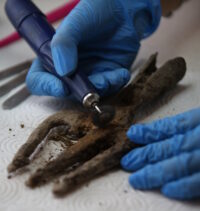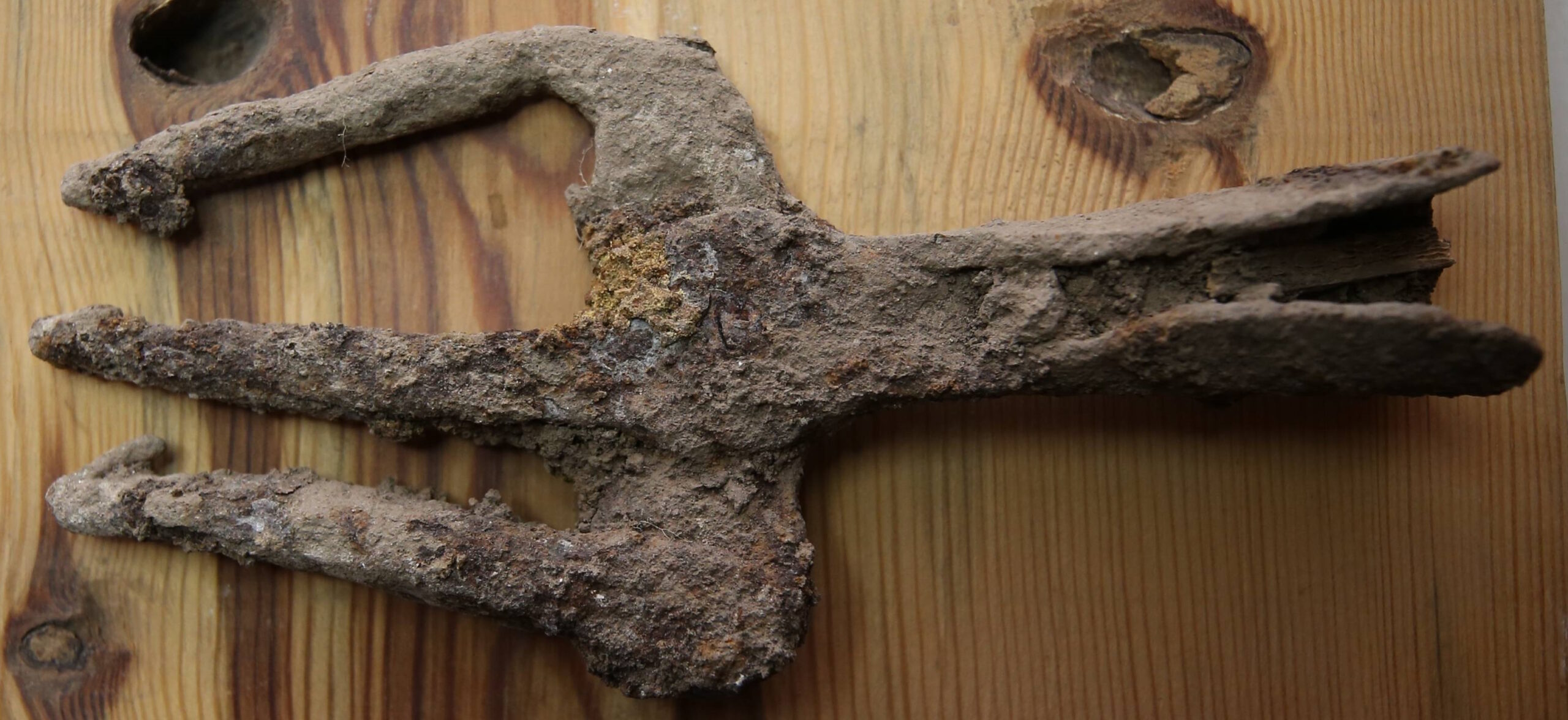An iron trident dating to the 3rd or 4th century A.D. has been discovered in the ancient Aegean coastal resort town of Assos in northwestern Turkey. It was unearthed by archaeologists excavating the Nymphaion, an ornate fountain on the east of the ancient city’s center. The trident was found among pieces of the Nymphaion’s collapsed vault, and was instantly recognized as the business end of a hand-held fishing harpoon from its size and distinctive shape.
“This is the first time we find such materials in Assos, because tools made of iron are the materials decaying most rapidly in ancient cities,” [Nurettin Arslan, humanities and social sciences professor at Canakkale Onsekiz Mart University,] said. However, this trident found in this structure is an important example in that it was found almost completely intact.
“Although we know that such tools were widely used in ancient times, we can say that it is an important work since the examples that have survived so far are very rare. As far as we know, it is said or we see in descriptions that such tools were used in ancient times to catch big fish at sea in small boats by lighting them with a torch at night,” he added.

Making their living from the sea for thousands of years, Assos’ fisherman likely had access to harpoons like this that was were produced locally. The iron’s origin cannot be pinpointed, but archaeological remains of iron slag and iron working have been found in Assos, so it’s entirely possible that it was made in town.

* This article was originally published here







No comments:
Post a Comment